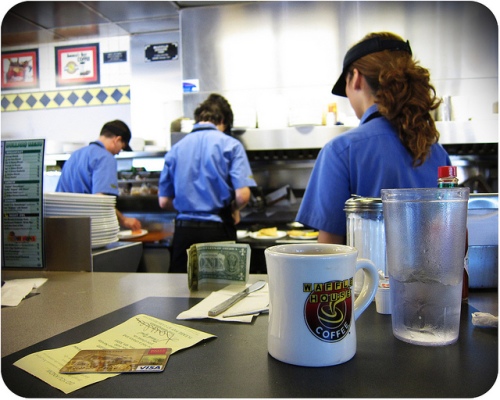One of our post-doctoral researchers, Jen Silva, has a very interesting op-Ed in Sunday’s New York Times that comes out of her research talking to young people in Lowell, MA and Richmond, VA about the challenges for working-class youth today.
Snippet:
In a working-class neighborhood in Lowell, Mass., in early 2009, I sat across the table from Diana, then 24, in the kitchen of her mother’s house. Diana had planned to graduate from college, marry, buy a home in the suburbs and have kids, a dog and a cat by the time she was 30. But she had recently dropped out of a nearby private university after two years of study and with nearly $80,000 in student loans. Now she worked at Dunkin’ Donuts.
‘With college,’ she explained, ‘I would have had to wait five years to get a degree, and once I get that, who knows if I will be working and if I would find something I wanted to do. I don’t want to be a cop or anything. I don’t know what to do with it. My manager says some people are born to make coffee, and I guess I was born to make coffee.’
Young working-class men and women like Diana are trying to figure out what it means to be an adult in a world of disappearing jobs, soaring education costs and shrinking social support networks. Today, only 20 percent of men and women between 18 and 29 are married. They live at home longer, spend more years in college, change jobs more frequently and start families later.
For more affluent young adults, this may look a lot like freedom. But for the hundred-some working-class 20- and 30-somethings I interviewed between 2008 and 2010 in Lowell and Richmond, Va., at gas stations, fast-food chains, community colleges and temp agencies, the view is very different.
Lowell and Richmond embody many of the structural forces, like deindustrialization and declining blue-collar jobs, that frame working-class young people’s attempts to come of age in America today. The economic hardships of these men and women, both white and black, have been well documented. But often overlooked are what the sociologists Richard Sennett and Jonathan Cobb in 1972 called their ‘hidden injuries’ - the difficult-to-measure social costs borne by working-class youths as they struggle to forge stable and meaningful adult lives.
The stories of young people growing up today from different walks of life will figure prominent in our forthcoming book on the growing youth opportunity gap in the US.
For those anxious to get their fix now of these stories, read Jen Silva’s book, “Coming Up Short: Working-Class Adulthood in an Age of Uncertainty” (Oxford University Press, 2013).
See also Jen’s piece in Salon re decline of working-class marriages with interesting snippets from her interviews.


